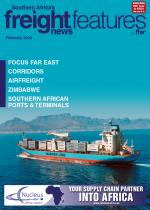The Port of Maputo is gearing up to increase citrus volumes this year as it moves ahead with an aggressive strategy to establish itself as a viable alternative for South African exporters and importers.Freight News spoke to several port stakeholders who said fundamental changes had been made at the port in recent years, including ongoing investment in infrastructure and equipment.“If one looks at the economic geography, it is clear that Maputo is an ideal port to service Johannesburg, Eswatini and Zimbabwe. In the logistics business, however, it is important to prove one’s ability before there will be large-scale buy-in,” said Mark Neel, DP World Maputo CCO. “Citrus is one of the more complex supply chains to execute – and Maputo last year proved it was more than capable of doing it. We have aspirations this year to more than double the volume of citrus through the Port of Maputo.”Not only have shipping lines committed to servicing Maputo, but sailings are increasing. The joint Unifeeder and Ocean Network Express (ONE) service increased its frequency from fortnightly to weekly for its Maputo, Middle East/India sailing. “There were a lot of people on the fence about using Maputo, but after our successful citrus season in 2022, we are seeing an increase in uptake as we have proved that the service works well. There is no faster service to the Middle East at present than what is on offer through Maputo.”Not only are citrus volumes expected to grow, but also macadamias, timber and minerals.“At the same time, our transit import market is developing well and we are also seeing these volumes on the rise. Over the past six years, port stakeholders have been working hard to develop first-class terminals that are committed to making sure it is as easy as possible for transit exporters or importers to use this gateway.”Speaking to port role players, it is clear that the commitment is there – both from the public and private sectors. “We have the same goals and are all working hard towards establishing Maputo as a competitive port that can add value to the region. The aim is not to shift any corridors, but rather to add an outlet for trade growth.”

